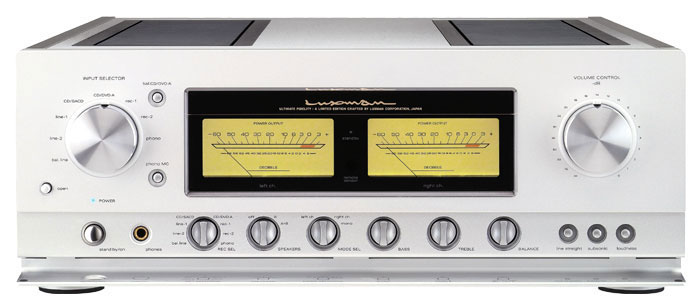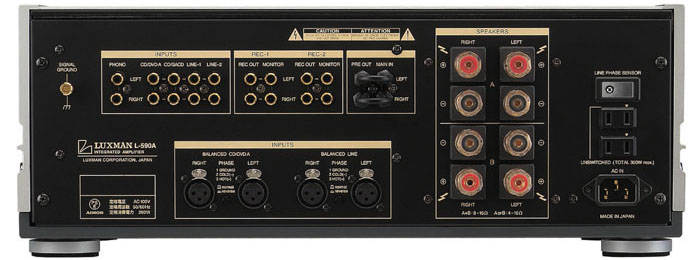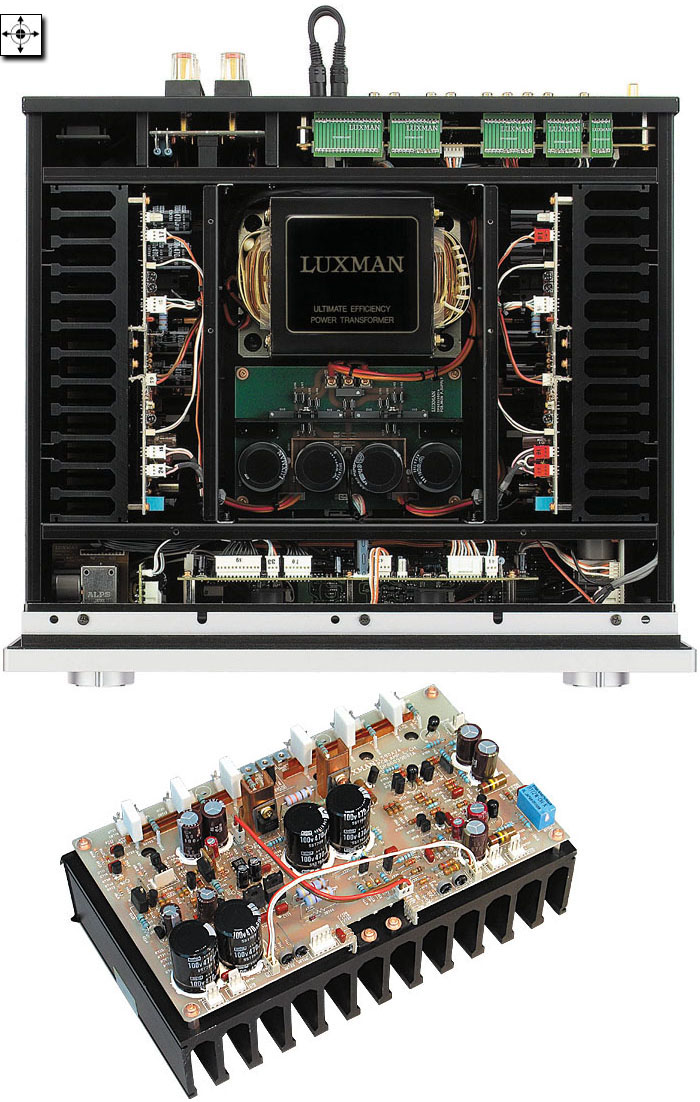This review page is supported in part by the sponsors whose ad banners are displayed below |
 |
 |
|
 |
Reviewer: Joël Chevassus
Financial Interests: click here
Source: Audio Analogue Grand Maestro CD, Luxman D-06 [on loan], Trends UD-10.1
Preamp/Integrated: Luxman L-590 AII, Vincent SV-238
Speakers: JLA Acoustique Perspective 2 Signature & Stand 80, McIntosh LS360, Venus Acoustique Caldeira Signature [on loan]
Cables: Naturelle Audio XLR cables Live 8 and Live 4, Naturelle Audio loudspeaker cables.
Power Cords: Guzi
Stands: Quest for Sound Isol pads for CD player, Ikea stand for Vincent SV-238
Room Size: 56 square meters.
Review Component Retail: ca. €7.500 in Europe (varies with country due to VAT)
|
 |
Context: It’s reasonably recent that Luxman has turned up the competitive heat on its younger Accuphase cousin to clamor for first place at the pinnacle of the best solid-state integrated amplifiers. Perfectly traditional, the Luxman Corporation still relies on pure class A design and highest linearity to pursue this goal and their concept of perfection. If in the past this company from Yokohama seemed to have momentarily abandoned the high end,
its strategy today is clearly focused on prestigious audio devices and high-quality standards. To my mind, certain recently released Luxman components will remain references well into the future and as such, objects of desire for subsequent generations of vintage addicts.
|
 |
|
|
|
The new Luxman solid-state amplifiers seem built to last for decades and styled with a particular insensitivity to fashion trends just like Accuphase. It might explain why elevated pricing finds real justification among aficionados and state-of-the-art listener as well as audiophiles looking for solid investments and products which offer sustainable value over the long term. After having introduced the L-590A in 2005, Luxman Corp. decided to go further and celebrate its 80th anniversary with certain commemorative components. |
 |
This new L-590A II is part of those and directly competes with Jiro Kasuga’s E-550 integrated amp. It benefits from several improvements and refinements compared to the previous version and is derivative of Luxman’s most expensive line of M and C Series separates. In its present range of integrated amplifiers, the top class A L-590 A II is the most desirable single-chassis solution from a purist’s point of view.
In fact, Luxman today markets a full line of six integrated amplifiers including two in class AB (L-505u, L-509u), two in class A (L-550A II, L-590A II) and two with valves (SQ-38u and SQ-N100). I had previous opportunity to briefly experience the little L-550A II brother capable of 20/40wpc into 8/4 ohms when it ran the high-sensitivity Consonance Barque M12 speakers. The results had been impressive. When one remembers a particular listening session a year later, it’s meaningful.
|
|
|
 |
I also more recently had the—very enjoyable—opportunity to listen to the M-600A and M-800A power amps over Triangle Magellan and Bösendorfer speakers.
Clearly pure class A circuits still represent for Luxman the ultimate approach to amplification as it does for other prestigious manufacturers. Class A amplifiers are notoriously inefficient, dissipate excessive heat and require beefier power supplies than class AB amplifiers but are held to treat the audio signal with less distortion.
With the current model, the amplification factor is relatively low and there’s very little global feedback needed to maintain stability. This benefits phase and circuit speed.
Further stated benefits are superior transient response and drastically reduced transient intermodulation which many designers believe is caused by phase and time delays between input and feedback signals. |
|
|
 |
 |
 |
|